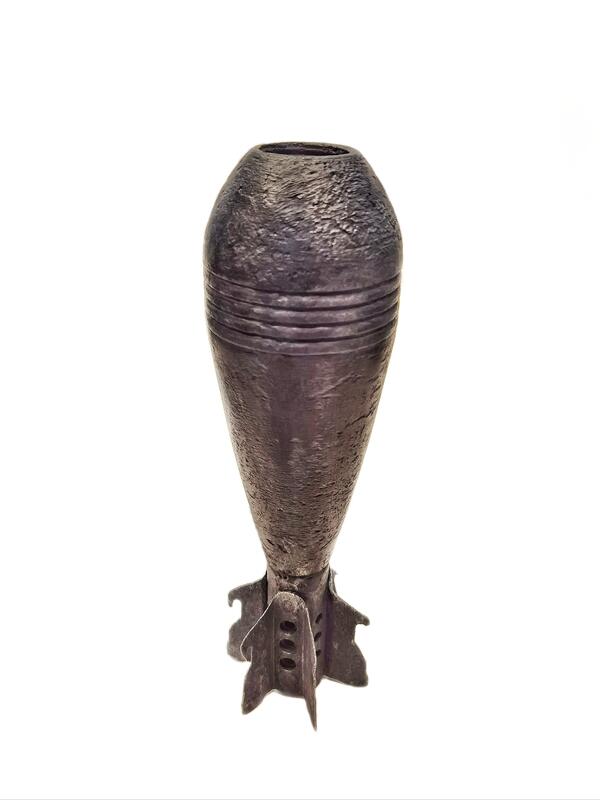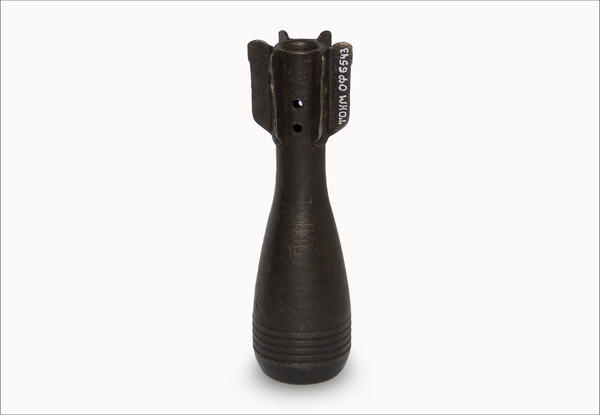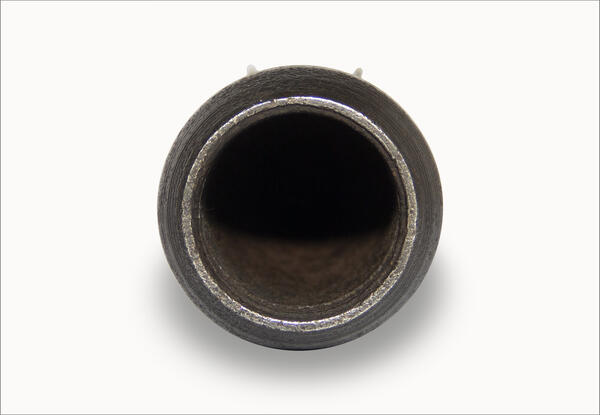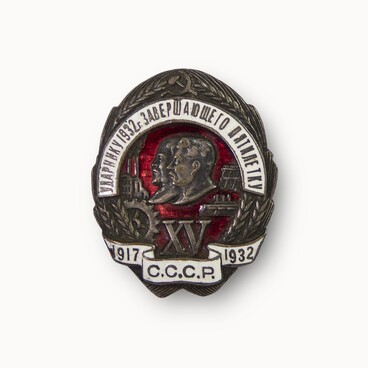This is a case of an 82 mm mortar bomb of the 1941 model. The bomb was equipped with an instantaneous or graze fuse. A powder charge was placed inside its head, which exploded when the bomb hit the ground and threw it in the air.
Such bombs were called bouncing. After they bounced off the ground, the main explosive charge would explode. Such bombs were usually painted dark green. The case of 82 mm bombs produced before the Great Patriotic War was made of cast iron using pattern-core equipment.
After the start of the Great Patriotic War, the demand for such bombs increased, and their production was organized at non-specialized enterprises. The troops used high-explosive fragmentation, six-vaned and ten-vaned fragmentation bombs, six-vaned smoke bombs, as well as leaflet shells.
The O-832 — an 82 mm six-vaned fragmentation bomb — weighed 3.31 kg. It contained 400 grams of explosives. During the explosion, between 400 and 600 fragments were formed, ensuring a casualty radius of 60 meters. The O-832D — an 82 mm ten-vaned fragmentation bomb — also weighed 3.31 kg and contained 400 grams of explosives. The D-832 six-vaned smoke bomb weighed 3.67 kg, while the A-832 leaflet shell weighed 4.6 kg. During the war, the latter was used by the Soviet government to distribute leaflets at the front.
The bombs were designed to destroy the enemy’s personnel and weapons, as well as various defenses. The ammunition of smooth-bore recoilless guns included hollow-charge mines for destroying tanks and high-explosive fragmentation bombs for destroying enemy personnel.
The cases of bombs were made of steel, sometimes — semisteel. They were equipped not only with a high-explosive shell filling, powder charges, and a fuse but also with a stabilizer. Its wings featured protrusions that ensured centering and proper movement along the mortar tube. The steel or aluminum stabilizer also ensured in-flight stability.
Such bombs were called bouncing. After they bounced off the ground, the main explosive charge would explode. Such bombs were usually painted dark green. The case of 82 mm bombs produced before the Great Patriotic War was made of cast iron using pattern-core equipment.
After the start of the Great Patriotic War, the demand for such bombs increased, and their production was organized at non-specialized enterprises. The troops used high-explosive fragmentation, six-vaned and ten-vaned fragmentation bombs, six-vaned smoke bombs, as well as leaflet shells.
The O-832 — an 82 mm six-vaned fragmentation bomb — weighed 3.31 kg. It contained 400 grams of explosives. During the explosion, between 400 and 600 fragments were formed, ensuring a casualty radius of 60 meters. The O-832D — an 82 mm ten-vaned fragmentation bomb — also weighed 3.31 kg and contained 400 grams of explosives. The D-832 six-vaned smoke bomb weighed 3.67 kg, while the A-832 leaflet shell weighed 4.6 kg. During the war, the latter was used by the Soviet government to distribute leaflets at the front.
The bombs were designed to destroy the enemy’s personnel and weapons, as well as various defenses. The ammunition of smooth-bore recoilless guns included hollow-charge mines for destroying tanks and high-explosive fragmentation bombs for destroying enemy personnel.
The cases of bombs were made of steel, sometimes — semisteel. They were equipped not only with a high-explosive shell filling, powder charges, and a fuse but also with a stabilizer. Its wings featured protrusions that ensured centering and proper movement along the mortar tube. The steel or aluminum stabilizer also ensured in-flight stability.






